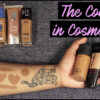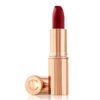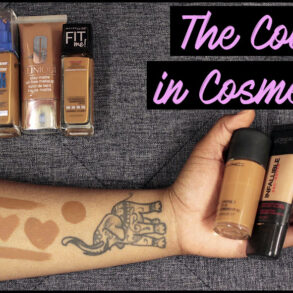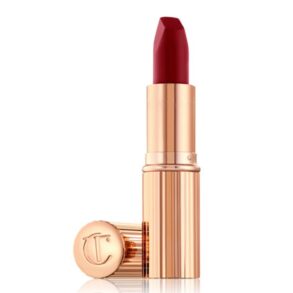New York, Nov. 28, 2023 (GLOBE NEWSWIRE) — The global optical brightening agents market size is slated to expand at ~8% CAGR between 2024 and 2036. The market is poised to garner a revenue of USD 20 billion by the end of 2036, up from a revenue of ~USD 10 billion in the year 2023.The growing demand for cosmetics and skincare is the major factor that is driving the market growth. Roughly eighty percent of U.S. women use cosmetics every day, amounting to 161 million people investing USD 15,000 on them during their lifetime.
Request Free Sample Copy of this Report @ https://www.researchnester.com/sample-request-5271
In the more general field of skincare and beauty, the average woman leaves her house each day having used at least 16 face care or cosmetics items, and she spends USD 200,000-USD 300,000 on skincare and cosmetic goods in her lifetime. Color-correcting or brightening chemicals in cosmetics such as shampoos, conditioners, and eye makeup contain optical brighteners. It is allowed for usage in cosmetics in the European Union.
Growing Demand for Paper Packaging is to Boost the Growth of Optical Brightening Agents Market
The growing e-commerce industry and rising consumption of processed food have driven the demand for paper packaging and cardboard packaging. Since people are becoming more conscious about the environment, the need for eradicating traditional plastic packaging has become important. As of January 2024, the number of customers demanding sustainable packaging has climbed to 81%, representing yet another significant step towards eradicating plastic waste. Moreover, when it comes to a brand’s level of sustainability, nearly 73% of UK consumers feel paper or cardboard packaging is important to them. Additionally, about 49% of consumers claimed they would pay more for both sustainable packaging and sustainable delivery, while around 33% have declined a purchase due to unsustainable packing.
Optical Brightening Agents Market: Regional Overview
The global market is segmented into five major regions including North America, Europe, Asia Pacific, Latin America, and the Middle East and Africa region.
Rising Production and Export of Textiles is to Boost the Market Growth in Asia Pacific Region
According to new ILO research, Asia remains the world’s largest clothing industry, but the sector is facing several issues but has overcome all of those, many of which have been exacerbated by the COVID-19 pandemic. The Asian garment industry from 2010 to 2019. It emphasizes how the industry still contributes to 55% of worldwide textile and garment exports and employs around 60 million people. OBAs are typically used to improve the whiteness of a fabric. They extract visible wavelengths from the ultraviolet light. Because most off-white hues reflect more strongly at the red/yellow end of the spectrum, several optical brightener agents used to improve the white look of a cloth produce light in the blue spectrum.
Make an Inquiry Before Buying this Report @ https://www.researchnester.com/inquiries-before-buying-5271
Growing E-Commerce Industry is to Elevate Market Growth in North America
With e-commerce retail expected to rise considerably, so will demand for packaging. In 2021, the United States produced more than 50 million metric tonnes of packaging paper and paperboard. This was a around 6 percent rise over the previous year. The United States is the world’s second-largest manufacturer of packaging paper and paperboard, after only China. There is a huge demand for paper packaging in the region, despite being the heavy producer itself, the region has also imported a bulk of paper packaging from other countries. In 2021, the US imported around 3 million metric tonnes of packaging paper and paperboard. During the time under consideration, this was the highest figure reported by the North American country. Imports of packaging paper and paperboard into the United States have surged by about 34% since the turn of the century.
Optical Brightening Agents, Segmentation by Type
- Stilbene
- Coumrain
Based on the type, the coumarin segment in optical brightening agents market will be the largest shareholder in the revenue by the end of 2036. The growth of the segment is majorly attributed to the rising demand for plastic products and plastic packaging. Coca-Cola alone creates three million tonnes of plastic packaging per year, which equates to a scary 200,000 plastic bottles. As plastic manufacturing has been surrounded by stringent regulations, therefore, the derivatives of coumarin are used in plastic products to meet the environmental guidelines. According to the European Environmental Agency, around 40% of plastic is used in packaging and about 7% and 9% are used in electronic components and automotive, respectively.
Optical Brightening Agents, Segmentation by End User
- Textile
- Plastic
- Cosmetics
On the basis of end user, the textile segment in optical brightening agents market is expected to gain the highest revenue over the forecasted period. The growth of the segment is majorly attributed to the rising trend of fast fashion in the textile industry. Fast fashion has evolved to epic dimensions as an economic and societal phenomenon. The world is saving a lot of cost on manufacturing that’s why the production has doubled. Moreover, clothing sales have more than doubled from around 100 to 200 billion pieces per year, while the average number of times an item is worn has reduced by nearly 36%.
Request for Customization of this Report @ https://www.researchnester.com/customized-reports-5271
A few of the well-known indsutry leaders in the global optical brightening agents market that are profiled by Research Nester are BASF SE, Huntsman Corporation, Archoroma, Akzo Nobel N.V., Clariant AG, Eastman Chemical Company, Keystone Aniline Corporation, Brilliant Group Inc., Deepak Nitrite Limited, and Mayzo Inc.
Recent Developments in the Optical Brightening Agents Market
- BASF completed the purchase of Solvay’s polyamide (PA 6.6) business. With innovative and well-known products such as Technyl®, the transaction expands BASF’s polyamide capabilities. This will enable BASF to provide even better engineered plastic solutions to its clients, such as for autonomous driving and e-mobility. The deal also improves the company’s access to growth areas in Asia, and North and South America. B ASF will now be present along the full value chain for polyamide 6.6 and improve supply reliability through backward integration into the essential raw ingredient adiponitrile (ADN).
- BASF has completed the sale of its worldwide pigments business. Following the fulfillment of clearance criteria, BASF concluded the divestment of its worldwide pigments business to the fine chemical company DIC. The cash and debt-free purchase price is USD 1.23 billion.
About Research Nester
Research Nester is a one-stop service provider with a client base in more than 50 countries, leading in strategic market research and consulting with an unbiased and unparalleled approach towards helping global industrial players, conglomerates and executives for their future investment while avoiding forthcoming uncertainties. With an out-of-the-box mindset to produce statistical and analytical market research reports, we provide strategic consulting so that our clients can make wise business decisions with clarity while strategizing and planning for their forthcoming needs and succeed in achieving their future endeavors. We believe every business can expand to its new horizon, provided a right guidance at a right time is available through strategic minds.









